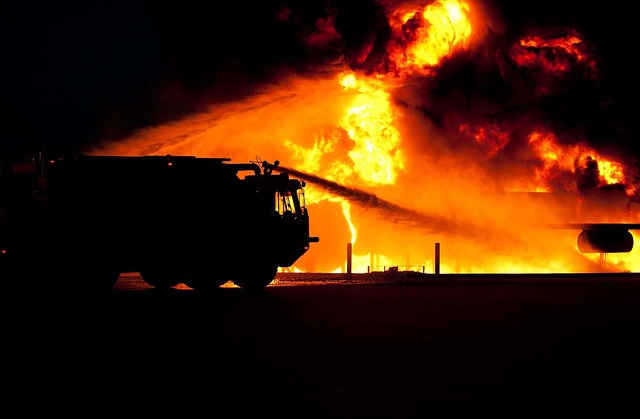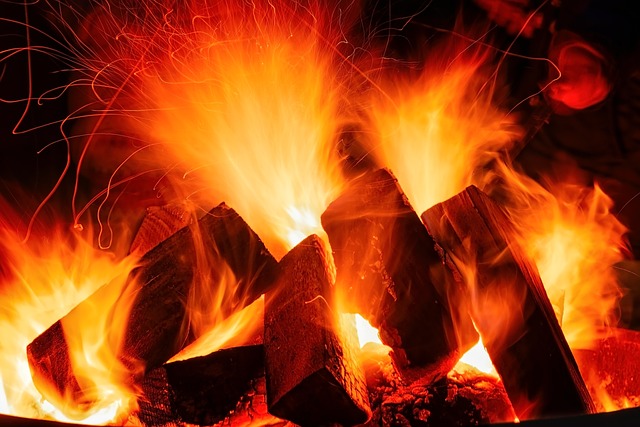House flipping investors play a vital role in California's real estate market, particularly by purchasing and revitalizing distressed properties, especially those damaged by fires. Operating in cities like Los Angeles, San Francisco, and Sacramento, where supply often outpaces demand, they transform undervalued homes into desirable residences, contributing to the local economy through construction and employment. While acquiring and renovating fire-damaged properties is challenging due to structural repairs, building codes, emotional attachments, and environmental hazards, successful flippers find significant rewards. California's diverse market ensures a strong market for flipped homes, making fire-damaged property a lucrative niche. Attracting investors specializing in this segment is crucial, with flippers offering comprehensive restoration packages tailored to post-fire insurance claims and rebuilding challenges. Selling fire-damaged properties requires navigating complex legal and financial considerations, including state regulations, permits, building codes, repair costs, and insurance claims coordination.
House flipping investors play a vital role in California’s dynamic real estate market, driving transformation and adding value. This article delves into the world of these savvy investors, exploring their motivations, strategies, and challenges. From understanding the allure of fire-damaged properties to navigating legal and financial considerations when selling such properties, we provide insights for both flippers and sellers. Discover successful strategies to attract and retain investors, ensuring a lucrative journey in California’s competitive real estate landscape.
- Understanding House Flipping Investors and Their Role in California's Real Estate Market
- The Allure of Fire-Damaged Properties for Flippers: Opportunities and Challenges
- Strategies for Success: How to Attract and Retain House Flipping Investors in CA
- Legal and Financial Considerations When Selling Fire Damaged Properties to Flippers
Understanding House Flipping Investors and Their Role in California's Real Estate Market

House flipping investors play a significant role in California’s dynamic real estate market, particularly when it comes to buying and revitalizing distressed properties. These investors identify undervalued or fire-damaged homes in areas like Los Angeles, San Francisco, or Sacramento—where supply often exceeds demand—and step in to renovate and sell these properties for a profit. By investing in sell fire damaged property California, they contribute to the local economy by creating new housing options and stimulating construction and employment opportunities.
These investors bring expertise and resources to bear on rehabilitating homes, transforming them into attractive, market-ready residences. They understand the nuances of real estate values and trends in specific neighborhoods, allowing them to make informed decisions about when to buy, renovate, and sell for maximum profit. Their activities can help stabilize or even enhance property values in areas that might otherwise face a decline due to economic factors or natural disasters like wildfires.
The Allure of Fire-Damaged Properties for Flippers: Opportunities and Challenges

Fire-damaged properties in California present a unique and enticing opportunity for house flipping investors. While many might shy away from such real estate, flippers see them as hidden gems with significant potential. The allure lies in the chance to acquire properties at potentially lower prices due to the damage, then renovate and restore them to their former glory or even surpass it, resulting in substantial profit margins upon selling. California’s diverse real estate market, with its constant demand for housing, ensures a solid market for these flipped homes.
However, investing in fire-damaged properties comes with challenges. Structural repairs, rebuilding efforts, and ensuring compliance with local building codes can be costly and time-consuming. Moreover, the emotional attachment some homeowners have to their damaged properties can make negotiations tricky. Flippers must also consider the potential environmental hazards associated with fires, such as asbestos or lead paint, adding another layer of complexity and cost to renovation projects. Despite these challenges, many successful flippers find that the rewards far outweigh the difficulties, making fire-damaged real estate a niche but lucrative segment in California’s competitive market.
Strategies for Success: How to Attract and Retain House Flipping Investors in CA

Attracting and retaining investors is key to a successful house flipping journey in California. One effective strategy is to specialize in selling fire-damaged properties. This niche market presents unique opportunities as many homeowners in CA face the challenge of insurance claims and rebuilding after a fire. By focusing on this specific demographic, flippers can stand out and offer specialized services tailored to their needs. For instance, they can provide comprehensive restoration packages, ensuring a smooth transition from damage to a fully renovated home.
Additionally, building strong relationships with investors through transparent communication, consistent performance, and competitive returns is vital. Hosting educational events or workshops on the benefits of investing in fire-damaged properties can draw in potential partners. Offering incentives, such as referral programs or partnerships with local contractors, can also foster loyalty among investors, creating a solid network for future flips.
Legal and Financial Considerations When Selling Fire Damaged Properties to Flippers

When selling fire-damaged properties in California, flippers must navigate a unique set of legal and financial considerations. First, they need to understand the state’s specific regulations regarding the sale of damaged real estate. This includes obtaining any necessary permits and complying with building codes, which can vary across different regions in California. Failure to adhere to these guidelines could lead to significant penalties or even the forcible removal of the property from the market.
Financially, flippers should carefully assess the repair costs and potential resale value post-renovation. Fire damage often requires substantial repairs, and it’s crucial to factor in these expenses along with applicable taxes and fees. Insurance claims play a pivotal role here; flippers must coordinate with insurers to determine coverage limits and settlement amounts, which can impact their final budget for purchasing and rehabilitating the property.
House flipping investors play a significant role in California’s real estate market, offering both opportunities and challenges. While fire-damaged properties can present unique opportunities for flippers, it’s crucial to navigate legal and financial considerations carefully. By understanding the allure of these properties and implementing successful strategies to attract and retain investors, professionals in California can maximize profits while ensuring ethical practices when selling fire damaged properties to flippers.






